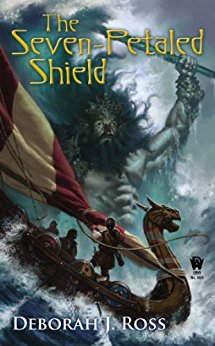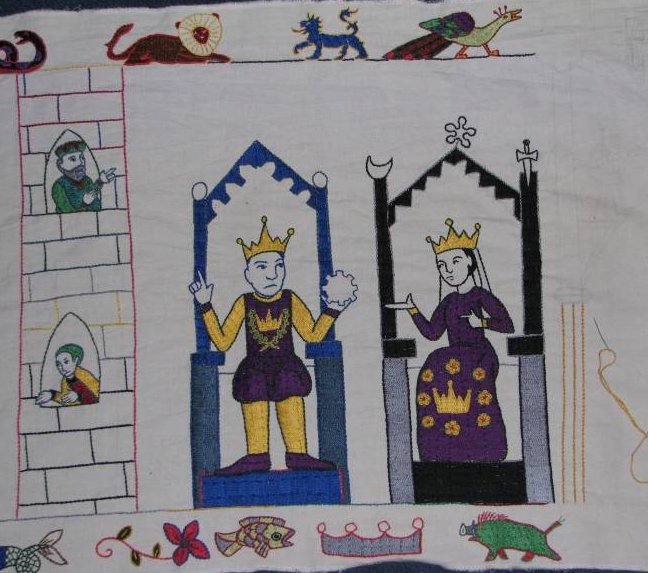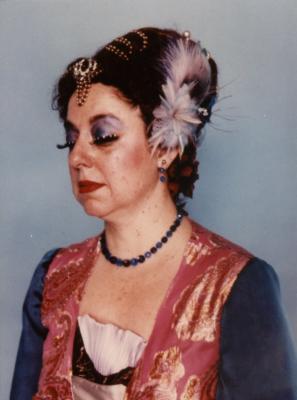By Carl Slaughter: Deborah Ross traces her career from her first encounter with Marion Zimmer Bradley to becoming an editor herself.
CARL SLAUGHTER: You’re best known for continuing Marion Zimmer Bradley’s Darkover series, but you had already established a writing career before then. Tell us about your earlier work.
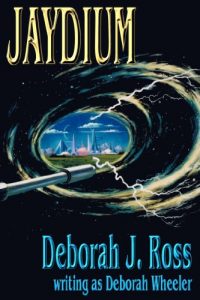 DEBORAH ROSS: I’ve been part of the sf/f community and SFWA for 35 years now. My first professional sale (under my previous name, Deborah Wheeler) was to Marion for the very first Sword and Sorceress anthology in 1982. Other sales of short fiction followed to F & SF, Asimov’s, Realms of Fantasy, and a slew other anthologies including Star Wars: Tales from Jabba’s Palace, Sisters of the Night, DAW 30th Anniversary Fantasy, and Bruce Coville’s Alien Visitors.
DEBORAH ROSS: I’ve been part of the sf/f community and SFWA for 35 years now. My first professional sale (under my previous name, Deborah Wheeler) was to Marion for the very first Sword and Sorceress anthology in 1982. Other sales of short fiction followed to F & SF, Asimov’s, Realms of Fantasy, and a slew other anthologies including Star Wars: Tales from Jabba’s Palace, Sisters of the Night, DAW 30th Anniversary Fantasy, and Bruce Coville’s Alien Visitors.
The real break came in 1991, when I lived in Lyons, France. A couple of months after I returned to the States, I sold my first novel, Jaydium, to DAW. The novel I’d written in France, Northlight, came out two years after that. And the novel inspired by living in the center of the French Resistance to the Nazi Occupation, Collaborators, was a Finalist for the Lambda Literary Award.
Since I’ve taken over the Darkover series, I’ve continued my original work with an epic fantasy trilogy, The Seven-Petaled Shield, which had its origins in the “Azkhantian Tales” short fiction in various issues of Sword and Sorceress.
CS: How did you meet Marion Zimmer Bradley?
DR: Somewhere around 1980, I wrote Marion a fan letter. To my surprise and delight, she wrote back with three pages of single-spaced typewriting. At the time, she was on the Grievance Committee of SFWA and used the official stationery. I now appreciate the prudence of that step, knowing the volume of fan mail she received over the years and her experiences of theft and exploitation by people she’d reached out to. I’d been training in Chinese martial arts (t’ai chi chu’an and kung fu san soo) at that time, and we began a conversation about empowerment, women, and writing.
CS: What type of relationship did you have with her?
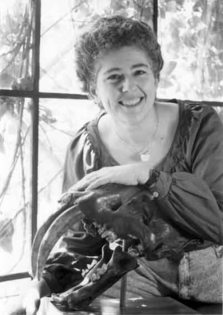 DR: Over the years, we became friends as well as colleagues. Toward the end of her life, hampered by a series of strokes, Marion worked with in collaboration several other writers. I was one of the writers she considered because she had watched me develop from a novice to an established professional. When she asked if I would like to work with her, I was just emerging from a particularly difficult time of my life and found myself a single working mom with a troubled adolescent still at home. Marion’s offer helped get me back on my feet again in terms of writing. She and I discussed the basic concept of our project by mail and then I drove up to see her. She’d been resting and was on oxygen, but she insisted on sitting up when I came in, and soon we were deep in discussion of plot ideas. I knew she had been very ill, but seeing her made her condition so much more vivid for me. One of my best memories of her was watching her “come alive” as we developed the characters and hatched plot points. Her eyes “glowed as if lit from within,” to use one of her favorite descriptions, and energy suffused her whole being. I asked question after question and then sat back as she spun out answers. It was as if she had opened a window into her imagination and invited me to peek inside. Her secretary told me that she talked for days afterwards about the visit and how excited she was about the project. We never got a second visit. She died a month later.
DR: Over the years, we became friends as well as colleagues. Toward the end of her life, hampered by a series of strokes, Marion worked with in collaboration several other writers. I was one of the writers she considered because she had watched me develop from a novice to an established professional. When she asked if I would like to work with her, I was just emerging from a particularly difficult time of my life and found myself a single working mom with a troubled adolescent still at home. Marion’s offer helped get me back on my feet again in terms of writing. She and I discussed the basic concept of our project by mail and then I drove up to see her. She’d been resting and was on oxygen, but she insisted on sitting up when I came in, and soon we were deep in discussion of plot ideas. I knew she had been very ill, but seeing her made her condition so much more vivid for me. One of my best memories of her was watching her “come alive” as we developed the characters and hatched plot points. Her eyes “glowed as if lit from within,” to use one of her favorite descriptions, and energy suffused her whole being. I asked question after question and then sat back as she spun out answers. It was as if she had opened a window into her imagination and invited me to peek inside. Her secretary told me that she talked for days afterwards about the visit and how excited she was about the project. We never got a second visit. She died a month later.
CS: How are you carrying on her work?
MR: Writing Darkover novels is very like writing historical fiction. I do research, using not only Marion’s published work, but her letters to me, The Darkover Concordance, and her articles in the old Darkover newsletters. Her Literary Trust and the folks at DAW have been invaluable as nit-pickers and sources of arcane details. I’d already written a number of stories for the Darkover anthologies, so I was familiar with the world not only as a reader but as a writer.
I try to create story lines that are true to Marion’s vision of Darkover and the themes that were meaningful to her. Fortunately, my natural literary voice is very close to Marion’s. Because I’m not trying to distort my own voice, I can then write from my heart. I trust that the footwork will lead me in the right direction and that I can flow with what comes to me.
CS: What was Bradley’s connection with Sword and Sorceress? What’s your connection?
DR: About the time I met Marion, the Friends of Darkover held periodic writing contests and published its own fanzine. I sent her a couple of stories and received encouraging comments (and, as I remember, an award for one of the stories and eventual fanzine publication of the other). When Marion began editing the first Sword and Sorceress for Don Wollheim at DAW, she suggested I submit a story for her. I was as elated by the invitation as if it had been a sale, and threw myself into writing the best story I could. It was a modest little story, but more than that, Marion showed me that I could take my writing professionally.
When I submitted a story for the second volume, Marion telephoned me. “Now Deborah,” she said (her typical way of opening an editorial conversation), “I’m going to take your story, but I’m sending it back to you for revision.” With that, I made the leap from all-or-nothing sale-or-rejection to working with an editor. My manuscript came back drenched in red ink, with comments like, “All thuds are dull!” and “Overwritten.” Don’t just fall in love with your words, she was saying, make them serve the story.
CS: How did you yourself become an editor?
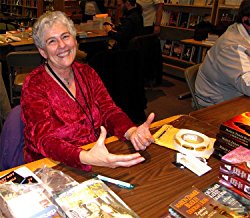 DR: Like many other writers, I wondered what it was like “on the other side of the desk,” both in terms of the choice of stories and their evolution into final form. I have had the honor to work with some extraordinary editors; I knew just how helpful a sympathetic and insightful editor can be in bringing out the best in a story. In other words, an editor is — or can be, if allowed to edit and not simply push numbers around for a multinational conglomerate — a story midwife. I also have strong ideas of what works for me in a story, what touches my heart and stirs my spirit.
DR: Like many other writers, I wondered what it was like “on the other side of the desk,” both in terms of the choice of stories and their evolution into final form. I have had the honor to work with some extraordinary editors; I knew just how helpful a sympathetic and insightful editor can be in bringing out the best in a story. In other words, an editor is — or can be, if allowed to edit and not simply push numbers around for a multinational conglomerate — a story midwife. I also have strong ideas of what works for me in a story, what touches my heart and stirs my spirit.
Around 2007, Vera Nazarian of Norilana Books approached me with the idea of editing an anthology. “Lace and Blade” is a term she coined for elegant, witty romantic fantasy that doesn’t sacrifice intelligence for swashbuckling action. This also gave me a chance to work with some of my favorite authors, including Tanith Lee, Mary Rosenblum, and Chaz Brenchley. (Editor’s joy: Mary’s story was a Nebula Finalist, and Chaz’s was reprinted in a “year’s best” anthology.) Since then, I’ve worked on subsequent volumes, as well as anthologies published by Book View Café (Beyond Grimm, with Phyllis Irene Radford; Mad Science Café, and Across the Spectrum, with Pati Nagle).
A few years ago, the Marion Zimmer Literary Trust decided to resume publication of the Darkover anthology series, and I edited Stars of Darkover (2014) with Elisabeth Waters, and subsequent volumes as solo editor. Since then, the Trust has put out annual volumes of both the Darkover series and Lace and Blade.
CS: Tell us a bit about your editorial approach to dealing with writers.
DR: Writing can be heart-wrenchingly lonely. It’s you and your doubts and the words that simply will not do what you want them to. When, finally, you have something that flows from your heart and you’re at the stage of submission, I think that calls for a special form of love. By this I mean respect for what both writer and editor are struggling to bring forth. We are partners and allies, not adversaries.
I’m very much a hands-on editor. I almost always ask for changes, but I’m quite open to hearing contrary opinions from my writers. (Thank you, Tanith, for drumming that principle into me!) Often that discussion clarifies where what’s on the page fails to fully evoke the author’s vision. Although I may make suggestions, I try not to tell the writer how to “fix” the problem. For one thing, I hate it when that happens to me. For another, the writer must be the final authority. I’m the second pair of educated eyes. If we come to an impasse, I have to decide if I can live with what the writer insists upon. Sometimes, then, it’s better to let the story go to another home, rather than carve the heart out of it.
CS: How does editing differ from writing fiction?
DR: Oh my goodness, everything is different — except perhaps the shared goal of the best possible creative work! As an themed-anthology editor, it’s my job to communicate my vision of the project to the writers, then cheer and encourage and appreciate. And ask for changes aimed at bringing the story more into itself, making it more effective at what the writer — not me — is trying to do. So it’s important for me to keep my ego out of the editing process. I must constantly keep in mind that these are not my stories.
CS: What’s in the future for you as an editor and a writer?
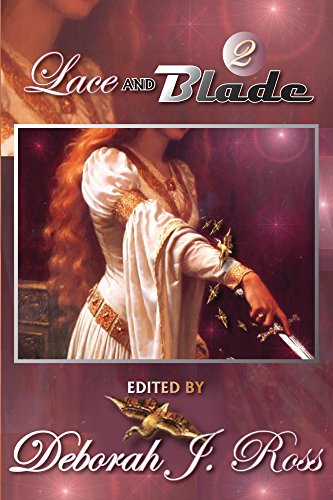 DR: As an editor, I’ll be working on annual volumes of the Darkover anthologies and Lace and Blade. And maybe more for Book View Cafe if inspiration strikes. As a writer, I have two major projects on my plate, plus a handful of shorter pieces. I’m now working on the next Darkover novel, The Laran Gambit, for DAW, and an on-spec YA astronomy-geek urban fantasy. I’d like to write more Darkover novels, including a series about the founding of each Tower. One of the joys of working with Book View Café is that I’m free to bring out my own work under my own control. So I expect I’ll continue to divide my time between the Darkover series, editing, and original fantasy and science fiction.
DR: As an editor, I’ll be working on annual volumes of the Darkover anthologies and Lace and Blade. And maybe more for Book View Cafe if inspiration strikes. As a writer, I have two major projects on my plate, plus a handful of shorter pieces. I’m now working on the next Darkover novel, The Laran Gambit, for DAW, and an on-spec YA astronomy-geek urban fantasy. I’d like to write more Darkover novels, including a series about the founding of each Tower. One of the joys of working with Book View Café is that I’m free to bring out my own work under my own control. So I expect I’ll continue to divide my time between the Darkover series, editing, and original fantasy and science fiction.
CS: What do you do when you’re not writing?
DR: Over the decades, I’ve also worked as a medical assistant to a cardiologist, resuscitated an elementary school library, studied Chinese martial arts, French, Hebrew, and yoga, lived in France, attended Launch Pad Astronomy Workshop, advocated as the family member of a murder victim for the abolition of the death penalty, knit for charity, and have been active in the women’s martial arts network and local Quaker community. I’ve also gotten interested in canine body language and dog training, with my most recent project the social rehabilitation of a traumatized retired seeing eye dog.
DEBORAH ROSS BIO
My work has earned Honorable Mention in Year’s Best SF, Kirkus notable new release, the Locus Recommended Reading List, and James Tiptree, Jr. Award recommended list, Finalist for the Lambda Literary Award, and nominations for the National Fantasy Federation Speculative Fiction Award for Best Author, and the Gaylactic Spectrum Award.
I served as Secretary of SFWA in 2004-05, and have taught writing and led writer’s workshops in various places. I’m a member and on the Board or Directors of the online writers’ collective, Book View Café, and on the current Philip K. Dick Award jury.

